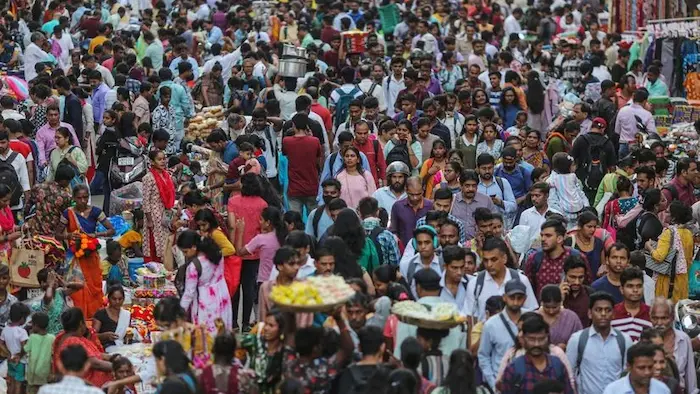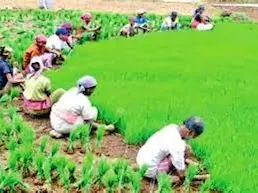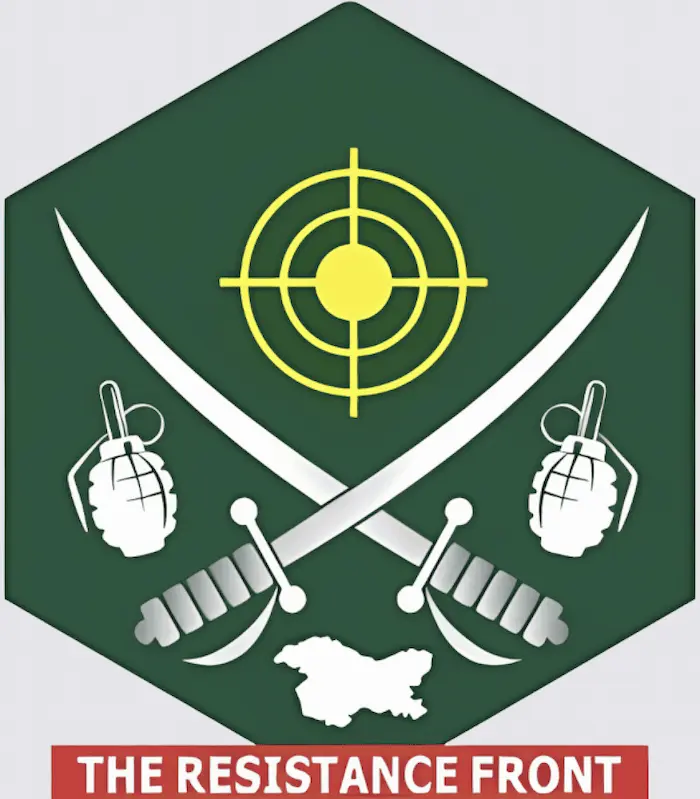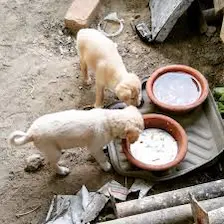1. Integration of 8th Economic Census with 16th Population Census – Economy

Why in News?
The Ministry of Statistics and Programme Implementation (MoSPI) is preparing for India’s 8th Economic Census, scheduled to begin in 2026–27. Significantly, this round will be integrated with the 16th Population Census to improve data collection efficiency and reduce costs.
Key Highlights
| Feature | Economic Census | Population Census |
|---|---|---|
| Conducting Authority | MoSPI | Ministry of Home Affairs (Registrar General of India) |
| Focus | Economic activities (non-agricultural establishments) | Demographic, social, and economic profile |
| Integration Objective | Streamline fieldwork, reduce duplication and cost | Holistic data capture at household and economic level |
Key Objectives of Integration
- Operational Efficiency: Sharing enumerators and field resources.
- Cost Reduction: Eliminate duplication of data collection infrastructure.
- Better Data Quality: Unified household-level economic and demographic data.
- Focus on Informal Sector: Capture micro and household-level enterprises often excluded from formal data sources.
About the Economic Census
| Aspect | Details |
|---|---|
| Initiated By | MoSPI, implemented through CSC e-Governance Services India Ltd. |
| Coverage | All non-agricultural economic establishments (formal + informal) |
| Captures Data On | Location, ownership, employment size, activity type, etc. |
| Importance | Critical for employment, GDP estimates, and policy targeting |
Historical Context
- Origins: Rooted in Visvesvaraya Committee (1925) and Bowley-Robertson Committee (1934).
- Institutionalization: Establishment of the Central Statistical Office (CSO) in 1951.
- Past Censuses:
1st – 1980
2nd – 1990 (aligned with Population Census 1981)
3rd – 1998 (aligned with Population Census 1991)
4th – 2005
5th – 2013
6th – 2019-21 (data delayed due to COVID-19)
Timeline
- Snow-bound/remote areas: Starting October 1, 2026
- Rest of India: Starting March 1, 2027
- Planning Committees: Established at State and District levels
Relevance & Implications
- Improved Policy Design: Enables data-driven economic and employment policies.
- Boosts Inclusion: Brings visibility to informal/micro-enterprises.
- Supports Targeted Schemes: Beneficial for MSME, Startups, and rural employment initiatives.
- Data Synergy: Fosters harmonized national statistical systems in line with UN SDG Goals (especially SDG 8: Decent Work and Economic Growth).
Exam Connect – Possible Questions
Prelims
1. Which of the following statements is/are correct regarding the Economic Census in India?
1. It covers both agricultural and non-agricultural establishments.
2. It is conducted by the Ministry of Home Affairs.
3. The 8th Economic Census will be integrated with the 16th Population Census.
Options:
A. 1 and 2 only
B. 2 and 3 only
C. 3 only
D. 1, 2, and 3
Answer: C. 3 only
2. The Economic Census in India was first conducted in:
A. 1951
B. 1980
C. 1991
D. 2001
Answer: B. 1980
Mains
1. Discuss the significance of integrating the Economic Census with the Population Census in India. How will this step help in improving data-driven policymaking, particularly for the informal economy?
2. The informal sector in India is often underrepresented in official statistics. In this context, evaluate the role of the Economic Census in improving the visibility of household-based and informal enterprises.
2. PM Dhan-Dhaanya Krishi Yojana (PMDDKY) – Convergence in Agriculture – Economy

Why in News?
The Union Cabinet has approved the Prime Minister Dhan-Dhaanya Krishi Yojana (PMDDKY), a reform initiative that aims to converge 36 existing schemes from 11 departments to address agricultural productivity disparities across India.
Objectives of PMDDKY
- Address Regional Disparities: Reduce inter- and intra-state disparities in agricultural productivity.
- Holistic Growth: Integrate efforts in agriculture and allied sectors for holistic rural development.
- Promote Self-Reliance: Enhance domestic food production, reduce import dependency.
- Encourage Local PPPs: Facilitate public-private partnerships at the district and block level.
- Value Addition: Support post-harvest infrastructure and agribusiness activities.
Why Scheme Convergence is Needed
| Issues with Fragmentation | Benefits of Convergence |
|---|---|
| Overlapping schemes & duplication | Efficient resource utilization |
| Isolated implementation | Coordinated service delivery |
| Uneven outcomes across regions | Tailored interventions via District Plans |
| Weak accountability | Common monitoring & evaluation systems |
Role of Localized District Plans
- Ground-level Planning: Plans based on local agro-climatic conditions.
- Bottom-up Approach: Greater role of Panchayati Raj Institutions (PRIs).
- Custom Solutions: Allows flexibility while retaining central guidelines.
Key Challenges in Implementation
| Challenge | Explanation |
|---|---|
| Administrative Silos | Departments may resist coordination, causing delays. |
| Data Deficiency | Many districts lack updated land and farm productivity data. |
| Institutional Weakness | Local institutions often lack technical and financial capacity. |
| Private Sector Reluctance | Risk perception in backward regions deters private investment. |
| Farmer Awareness | Farmers may not fully understand the scheme’s benefits without outreach. |
Way Forward
- Increase Public Investment: Convergence must be backed by adequate public funding.
- Digital Monitoring: Use GIS, remote sensing, and digital dashboards for real-time tracking.
- Capacity Building: Train local officials and PRI members for effective execution.
- Targeted IEC Campaigns: Run information campaigns to boost farmer awareness.
Significance of PMDDKY
- A paradigm shift from fragmented schemes to integrated planning.
- Aligns with the Doubling Farmers’ Income strategy.
- Promotes balanced regional development and inclusive agricultural growth.
- Supports India’s broader goals under SDG 2 (Zero Hunger) and SDG 12 (Sustainable Consumption and Production).
Exam Connect – Possible Questions
Prelims
1. Consider the following statements regarding the PM Dhan-Dhaanya Krishi Yojana (PMDDKY):
1.It aims to converge multiple schemes from different ministries and departments.
2.It focuses on agricultural export promotion through SEZs.
3.The scheme encourages local public-private partnerships at the district level.
Which of the statements given above is/are correct?
A. 1 and 2 only
B. 1 and 3 only
C. 2 and 3 only
D. 1, 2 and 3
Answer: B. 1 and 3 only
2. What is the primary objective of launching the PM Dhan-Dhaanya Krishi Yojana
A. Increasing agricultural exports
B. Promoting organic farming
C. Reducing productivity disparities across regions
D. Enhancing MSP-based procurement
Answer: C. Reducing productivity disparities across regions
Mains
1. PM Dhan-Dhaanya Krishi Yojana represents a shift from fragmented welfare schemes to converged rural development planning. Critically evaluate its potential and challenges.
2. “One umbrella scheme cannot substitute the need for increased public investment in agriculture.” Discuss this statement in the context of the PMDDKY initiative.
3. Indian Inequality and the World Bank’s Claims – Economy
Why in News?
A recent World Bank report titled India Poverty and Equity Brief (April 2025) has sparked controversy over its claims about poverty reduction and consumption inequality in India. The report’s findings have drawn both appreciation and criticism, especially around the use and interpretation of data.
Key Takeaways
- Claimed Decline in Inequality:
World Bank states that consumption inequality in India has reduced significantly in recent years. - Data Skepticism:
Critics argue that this conclusion might be based on flawed or partial data, underestimating the true extent of inequality. - Living Standards:
Improved consumption patterns among lower-income groups point to rising living standards. - Income Inequality:
Debate remains unresolved due to the lack of reliable income data in India.
Understanding the Metrics of Inequality
| Measure | Explanation |
|---|---|
| Gini Coefficient (Consumption) | Dropped from 28.8 (2011–12) to 25.5 (2022–23) → suggests reduced inequality |
| Data Source | Based on Household Consumption Expenditure Survey (HCES) |
| Methodology Used | Modified Mixed Reference Period (MMRP) – internationally accepted |
Key Data Points
- Extreme Poverty Reduction:
~270 million people (27 crore) lifted out of extreme poverty (based on $3/day international poverty line) from 2011 to 2023. - Income Share of Bottom 50%:
Increased from 13.9% (2017) to 15% (2022) – indicating possible improvement in income equity.
Points of Debate
| Argument in Favor (World Bank View) | Counterpoints (Critics’ Concerns) |
|---|---|
| Falling Gini coefficient = less inequality | Consumption ≠ Income; may mask income and wealth disparities |
| MMRP methodology is robust | Data may still miss top-end consumption or informal earnings |
| Large poverty reduction since 2011 | Rising inequality in education, healthcare access, and assets |
What is the Gini Coefficient?
- A statistical measure of distribution inequality (ranges from 0 to 100).
- 0 = perfect equality (everyone has same income);
100 = perfect inequality (one person has everything). - Used both for income inequality and consumption inequality.
Broader Implications
- India’s policy direction (welfare schemes, targeted subsidies, direct benefit transfers) may have helped reduce consumption disparities, but:
- Lack of granular, frequent income data challenges accurate assessments.
- Rising wealth inequality and urban–rural divide remain unresolved.
Key Takeaway
While India has made tangible gains in poverty reduction and narrowing consumption gaps, a holistic assessment of inequality must consider income, assets, wealth, and access to services—not just household spending.
Exam Connect – Possible Questions
Prelims
1. Which of the following statements is/are correct regarding the Gini coefficient?
1. It is a measure of income and consumption inequality.
2.A higher Gini value indicates a more equal society.
3.India’s Gini coefficient for consumption has decreased between 2011 and 2023.
Options:
A. 1 and 2 only
B. 1 and 3 only
C. 2 and 3 only
D. 1, 2 and 3
Answer: B. 1 and 3 only
(Statement 2 is incorrect: a higher Gini value = more inequality)
2. The Household Consumption Expenditure Survey (HCES) recently used which methodology to assess consumption patterns?
A. Linear Expenditure Model
B. Mixed Method Surveying
C. Modified Mixed Reference Period (MMRP)
D. Universal Basic Methodology
Answer: C. Modified Mixed Reference Period (MMRP)
Mains
1. “India has made progress in reducing poverty, but inequality remains a challenge.” Discuss in the light of the World Bank’s 2025 Poverty and Equity Brief and related criticisms.
2. Why is the Gini coefficient based on consumption often considered insufficient to fully capture inequality in India? Suggest alternate indicators that may offer a more holistic picture
4. Designation of The Resistance Front (TRF) as a Foreign Terrorist Organization – International Relations

Why in News?
The United States Department of State has officially designated The Resistance Front (TRF) as a Foreign Terrorist Organization (FTO) and Specially Designated Global Terrorist (SDGT).
This decision follows the group’s responsibility claim for the Pahalgam terror attack in April 2025, which killed 26 people.
Key Takeaways
- Affiliation: TRF is an offshoot of the Pakistan-based Lashkar-e-Taiba (LeT).
- Formation: Emerged after the abrogation of Article 370 in August 2019.
- Claims of Indigenous Identity: Markets itself as an indigenous Kashmiri resistance group to mask Pakistani involvement.
- Current Leadership:
- Chief: Sheikh Sajjad Gul
- Spokesperson: Ahmad Khalid
Major Attacks Linked to TRF
| Attack | Location | Date | Casualties |
|---|---|---|---|
| Pahalgam Attack | South Kashmir | April 2025 | 26 killed |
| Ganderbal Killings | Central Kashmir | Oct 2024 | 7 civilians |
| Reasi Bus Attack | Jammu | June 2024 | Multiple |
| Lal Chowk Attack | Srinagar | 2020 | 6 fatalities |
Propaganda & Digital Warfare
- Platform: KashmirFight – used for spreading separatist propaganda, issuing threats, and claiming attacks.
- Aims to radicalize youth and portray militancy as local and legitimate resistance.
India’s Domestic Measures
- Banned under UAPA (Unlawful Activities Prevention Act), 1967.
- Declared a terrorist organization by the Government of India.
- Used diplomatic platforms (e.g., UN 1267 Sanctions Committee) to highlight TRF’s links with LeT, ISI, and Pakistan Army.
Significance of U.S. Designation
| Measure | Impact |
|---|---|
| FTO Status | Makes it illegal for U.S. persons to support TRF in any capacity |
| Asset Freeze | Freezes any TRF-linked assets under U.S. jurisdiction |
| Financial Sanctions | Restricts access to global banking and fundraising |
| Global Isolation | Signals to other nations the need to monitor or ban the group |
India–U.S. Counter-Terrorism Cooperation
- Enhanced strategic coordination under Quad and bilateral frameworks.
- Cooperation via intelligence sharing, cyber-surveillance, and anti-money laundering (AML) efforts.
- Supports India’s long-standing position of highlighting Pakistan-sponsored terrorism in international forums.
Analytical Insight
The designation of TRF by the U.S. reflects a broader international recognition of proxy terrorism in Jammu and Kashmir.
It also strengthens India’s diplomatic case for:
- Naming and shaming state sponsors of terror
- Greater international collaboration in counter-terror financing
- Combating digital radicalization and hybrid warfare
Exam Connect – Possible Questions
Prelims
1. The Resistance Front (TRF), recently designated as a terrorist group by the United States, is associated with which of the following?
A. Al-Qaeda
B. Lashkar-e-Taiba
C. Jaish-e-Mohammed
D. Hizb-ul-Mujahideen
Answer: B. Lashkar-e-Taiba
2. Consider the following statements regarding the designation of Foreign Terrorist Organizations (FTOs) by the United States:
1.FTO designation allows the freezing of assets under U.S. jurisdiction.
2.Only the United Nations Security Council can designate groups as FTOs.
3.The designation prohibits U.S. entities from supporting the listed group.
Which of the above statements are correct?
A. 1 and 2 only
B. 1 and 3 only
C. 2 and 3 only
D. 1, 2 and 3
Answer: B. 1 and 3 only
(Statement 2 is incorrect – FTO designation is made independently by the U.S. government)
Mains
1. Discuss the significance of the United States’ designation of The Resistance Front (TRF) as a Foreign Terrorist Organization in the context of India’s counter-terrorism strategy.
2. Proxy terror groups in Jammu and Kashmir often use digital propaganda and claims of indigenous resistance to mask foreign control. Analyze the challenges and suggest measures to counter such hybrid threats.
5. Stray Dog Feeding – Balancing Compassion and Public Safety – Polity

Why in News?
The Supreme Court of India recently addressed a legal dispute involving a Noida resident, who alleged harassment by her Residents’ Welfare Association (RWA) for feeding stray dogs in shared spaces. The Court emphasized that individuals should feed community dogs responsibly, preferably within private premises, thereby highlighting the tension between animal welfare and public safety.
Legal Context
- Petitioner’s Allegation: The Noida resident claimed harassment by RWA members and destruction of food/water bowls set out for stray dogs.
- RWA’s Concern: Feeding stray dogs in common areas could cause safety risks, nuisance, and public disturbances.
- Supreme Court Observation:
- Feeding stray dogs is not punishable,
- But it must be regulated to avoid conflict and ensure public order.
- Individuals may feed dogs, but ideally not in shared or high-traffic areas.
Applicable Legal Frameworks
1. Prevention of Cruelty to Animals Act, 1960
- Prohibits cruelty to animals and provides for their welfare.
- Legal basis for feeding and protecting stray animals.
2. Animal Birth Control (ABC) Rules, 2023
Issued under the 1960 Act, the ABC Rules focus on:
- Sterilization and vaccination of stray dogs.
- Preventing rabies and overpopulation.
- Guidelines for humane and safe feeding practices, including:
- Feeding at designated spots and times.
- Ensuring hygiene and non-obstruction of public spaces.
- Collaboration with local authorities for dog management.
Fundamental Rights Involved
| Right | Relevance |
|---|---|
| Article 21 | Right to life and dignity – applicable to both humans and animals. |
| Article 19(1)(a) | Freedom of expression – often invoked in the context of compassionate acts like feeding. |
| Directive Principles (Art. 48A) | State shall protect and improve the environment and safeguard forests and wildlife. |
The Public vs. Private Dilemma
- Residents’ Concerns: Threat to children, noise disturbances, hygiene issues, and dog bites.
- Animal Welfare Advocates: Feeding helps build trust with strays, enabling sterilization and vaccination.
Analytical Insight
This issue reflects broader questions of:
- Cooperative federalism at the local level: RWAs vs. Municipal Authorities.
- Urban governance: Managing community animals in growing cities.
- Need for clear municipal bylaws: Balancing compassion with public health and safety.
Exam Connect – Possible Questions
Prelims
1. Under which legislation are the Animal Birth Control (ABC) Rules, 2023 framed?
A. Environment Protection Act, 1986
B. Epidemic Diseases Act, 1897
C. Prevention of Cruelty to Animals Act, 1960
D. Wildlife Protection Act, 1972
Answer: C. Prevention of Cruelty to Animals Act, 1960
2. Which of the following statements is/are correct?
1.Feeding stray dogs is legally prohibited under the Prevention of Cruelty to Animals Act.
2.The ABC Rules, 2023 allow for designated feeding areas to ensure public safety.
3.Supreme Court has ruled that compassionate acts like feeding animals can never be restricted.
Options:
A. 1 and 2 only
B. 2 only
C. 1 and 3 only
D. 1, 2 and 3
Answer: B. 2 only
(Statement 1 is incorrect – feeding is not prohibited. Statement 3 is incorrect – it can be regulated for public order.)
Mains
1. Discuss how the Supreme Court’s recent observations on stray dog feeding reflect the balance between individual compassion, constitutional rights, and public safety in urban spaces.
2. Critically evaluate the role of the Animal Birth Control Rules, 2023 in managing the stray dog population in India. What challenges do local authorities face in enforcing these rules effectively?
6. Mental Health of Pilots – A Governance and Safety Imperative – Governance
Why in News?
The Aircraft Accident Investigation Bureau (AAIB) released a preliminary report on the Air India Boeing 787 incident (Ahmedabad, June 12, 2025), drawing attention to the often-overlooked issue of pilot mental health and its impact on flight safety.
Key Concerns: Mental Health Challenges Among Pilots
| Issue | Explanation |
|---|---|
| Chronic Stress & Fatigue | Long hours, time zone changes, and night shifts disrupt biological rhythms, impairing judgment. |
| Sleep Deprivation | Inability to sleep “on demand” in unfamiliar environments leads to cumulative fatigue. |
| Depression & Suicidal Thoughts | Isolation, emotional pressure, and stigma around mental illness go undetected. |
| Career & Financial Pressure | Pilot training costs, job insecurity (exacerbated by COVID-19), and lack of support systems worsen psychological distress. |
Global Evidence:
- Colgan Air Flight 3407 (2009): Crash linked to pilot fatigue.
- Germanwings Flight 9525 (2015): Deliberate crash caused by pilot suffering from severe depression.
Aviation Governance in India
| Regulatory Body | Function |
|---|---|
| DGCA (Directorate General of Civil Aviation) | Air safety, licensing, flight rules, oversight of airlines |
| Ministry of Civil Aviation | Policy formulation and inter-agency coordination |
| Airports Authority of India (AAI) | Airport management and air navigation safety |
| BCAS (Bureau of Civil Aviation Security) | Airport and airline security standards |
DGCA Guidelines on Pilot Mental Health (2021)
- Peer Support Programs (PSPs): Peer-led mental health support initiatives within airlines.
- Confidential Reporting Mechanism: Allows pilots to report anxiety or stress without immediate risk of losing flying privileges.
- Medical Evaluation: Encourages psychological assessments and reintegration after treatment.
Global Best Practices to Consider
| Country | Practice | Details |
|---|---|---|
| Germany (Lufthansa) | Peer Support Programs | Anonymous peer-led interventions for early-stage mental health issues. |
| U.S. (FAA – HIMS Program) | Non-punitive Disclosure | Pilots can disclose conditions and return to flying after treatment. |
| Australia (CASA) | Training & Awareness | Mental health modules included in pilot training curriculum. |
Why This Matters: Broader Significance
- Public Safety: Unstable mental health in the cockpit can have catastrophic consequences.
- Occupational Health: Pilots operate in high-risk, high-stress professions—support mechanisms are critical.
- Governance Challenge: The aviation industry must balance safety compliance with non-punitive mental health care.
The Way Forward
- Make mental health training mandatory in pilot licensing and refresher courses.
- Institutionalize non-punitive self-reporting systems to eliminate stigma.
- Expand tele-counseling and confidential therapy options within aviation agencies.
- Integrate mental health audits in DGCA’s annual airline compliance checks.
Exam Connect – Possible Questions
Prelims
1. The HIMS Program, often discussed in the context of pilot mental health, is associated with:
A. Australia’s Civil Aviation Safety Authority
B. International Air Transport Association
C. U.S. Federal Aviation Administration
D. European Union Aviation Safety Agency
Answer: C. U.S. Federal Aviation Administration
2. Which of the following Indian institutions is responsible for regulating civil aviation safety?
A. Bureau of Civil Aviation Security
B. Airports Authority of India
C. Directorate General of Civil Aviation
D. Indian Air Force
Answer: C. Directorate General of Civil Aviation
Mains
1. Mental health issues among pilots present a significant governance and safety concern. Discuss the steps taken by Indian aviation authorities and suggest further measures in light of international best practices.
2. In high-risk professions like aviation, stigmatization of mental illness can undermine public safety. How can regulatory systems encourage early reporting and treatment without penalizing professionals?

